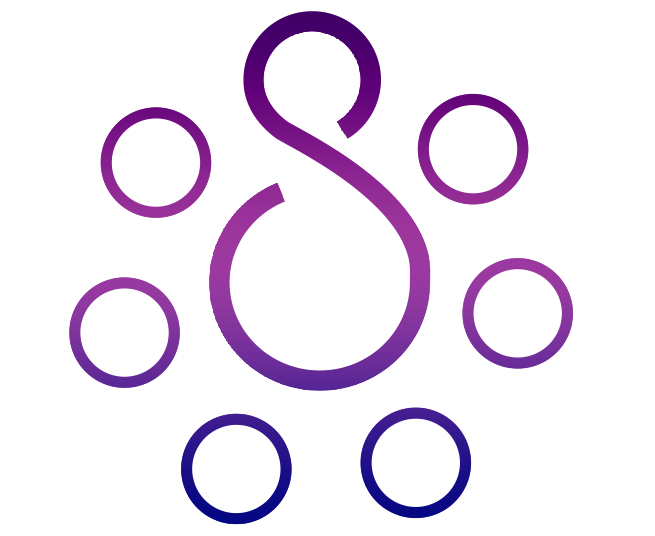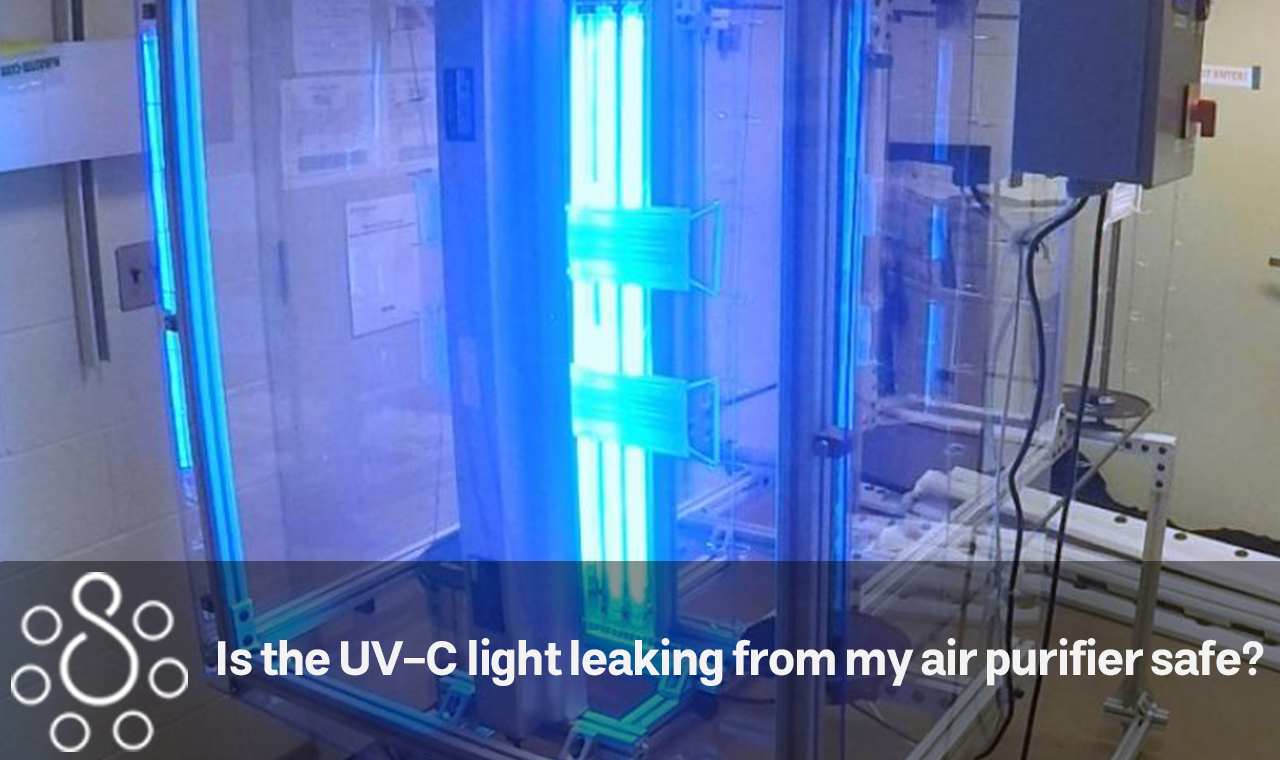A rising number of people are resorting to air purifiers that are equipped with UV rays in the hopes of eliminating viruses such as COVID-19. The technology, which includes far-ultraviolet, far-ultraviolet cathode, and UVGI, is reported to be capable of killing 99.9 percent of viruses. Here we will discuss about air purifier and related function. Follow us.
How UV Light Air Purifiers Work?
The terms “UV-C sanitizers” and “UV Light Germ Killers” are often used interchangeably when referring to UV light air purifiers. Further citation is required. Further citation is required. The method of using ultraviolet light to “sanitize” an environment and eliminate airborne pathogens by destroying viruses is straightforward and simple to explain. That is a good way to sum things up. Even though the science behind air purifiers is pretty simple, marketers love to use fancy words to explain how they work so they can sell their products.
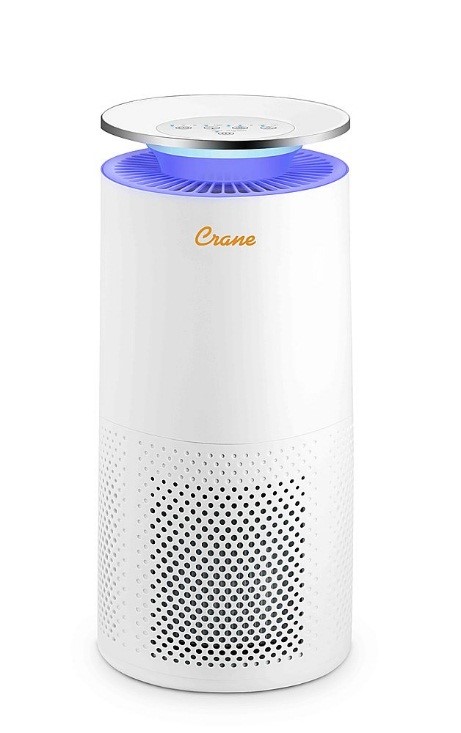
The Problem With UV Light Air Purifiers on the Market
The issue that has to be answered is whether or not the ultraviolet (UV) lights found in UV light air purifiers and far UV-C technologies are strong enough to eradicate the coronavirus. Researchers have found that more than 99.9% of the COVID-19 virus needs to be killed with a dose of 75 mill joules per square centimeter.
Following an investigation of Taboo, the most popular online shopping site in China, we were able to gather information on the UV light output of three different UV light air purifiers.
The UV bulbs in each of these three cleaners have a power output of 6 watts on average. Using a simple rule of thumb, these purifiers put out an average of 6 mill watts per square centimeter (mW/cm2) of UV radiation when measured at an average distance of 10 centimeters from the UV light.
Related Article: Learning to use and set up Surya Professional disinfectant with UV-C sterilizer box
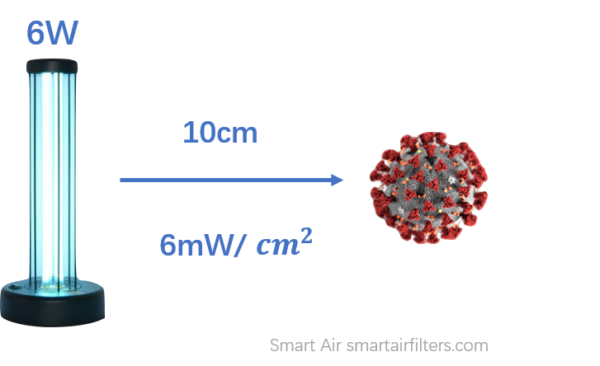
In order to eliminate more than 99.9% of the viruses, the ultraviolet light would have to be shone for at least 12.5 seconds at a power density of 6 mW/cm2.
That doesn’t seem like a very long time. However, since we are familiar with the airflow of each purifier, we were able to determine that the air moves through the purifiers in around 0.35 seconds. That’s just one-thirtieth as long as the period needed to eradicate the infections.
Is it true that UV lamps do not have sufficient power?
Particles that were just two centimeters away from the light would be exposed to a dose that was fifty mill watts per square centimeter (mW/cm2) At this range, it would only take a half-second to eliminate more than 99.9% of the infection. This is a significant improvement, but it is still an excessively lengthy time for air that is only in the purifier for 0.35 seconds.
Because of this, regular air purifiers that use UV light are not able to get rid of COVID-19.
But Can Air Purifiers with Strong UV Lights Kill COVID-19 and Viruses?
As a direct response to COVID-19, a number of new businesses have started up, promising to sell “extremely powerful UV light air purifiers.”
The manufacturer of this UV light air purifier asserts that it is uniquely suitable for the task of eliminating viruses. Because the purifier has what they call a “special coating,” they are able to produce a UV light intensity of 16.8 mill watts per square centimeter. That is roughly three times as powerful as the so-called “standard” UV light air purifiers that were discussed before.
At a power density of 16.8 mW/cm2, viruses would need to be subjected to UV light for 4.46 seconds for more than 99.9% of them to be destroyed. That is a slight improvement over regular UV light purifiers, but it is by no means ideal. For this purifier to eliminate COVID-19 at a level greater than 99.9%, the air would have to go through it 15 times.
Because of this, even the most powerful “COVID-19 ready” UV light purifiers don’t have enough time to kill COVID.
Related Article: Is UV-C light harmful for air ducts and electronics?
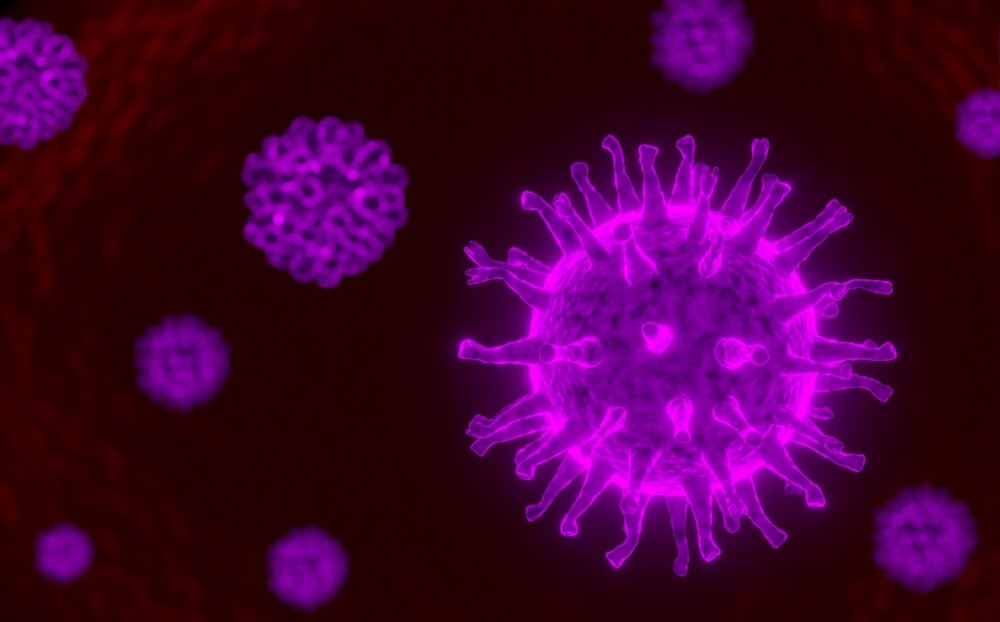
What All UV light Air Purifiers Have in Common: A HEPA Filter
Let’s go backwards from here for a moment. A HEPA filter is something that the majority of the UV light air purifiers mentioned above have in common. The explanation behind this is rather straightforward. The ultraviolet (UV) lamps included in air purifiers do not have sufficient strength to eradicate all viruses in a single pass. On the other hand, HEPA filters are very effective in removing viruses from the air. Based on the data, they can catch more than 99.9% of viruses on the first try.
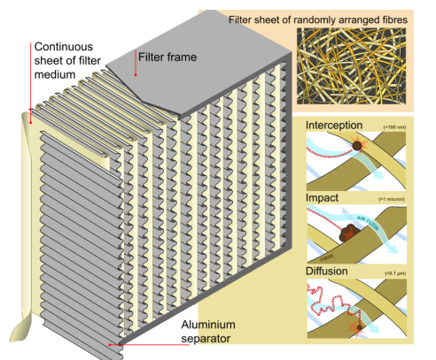
Maybe the UV Light Is to Kill Viruses Stuck in the Hepa Filter?
Let’s give the questioned air purifiers the benefit of the doubt and assume they are effective. It does not appear to be a good idea to attempt to purify air that is traveling through the purifier at an extremely rapid rate. Therefore, it’s possible that the UV light’s purpose is to disinfect any viruses that become trapped in the HEPA filter. Our extremely simplified explanation of how something like this could operate
However, that has its own set of challenges. The HEPA filter is a complicated mat made of fibers that have been pleated. It is unlikely that a UV light shining on the surfaces of a HEPA filter will actually kill all of the germs on those surfaces.
Also, UV light can damage things like masks and HEPA filters.
That’s not the end of it. There are also a few other problems with using UV light in air purifiers.
The effectiveness of dirty UV lights quickly degrades, which brings us to our first point.
If dust accumulates on UV lights, the irradiation produced by the UV light bulb will be significantly reduced. Because of this, UV light purifiers will either lose their effectiveness rapidly or need to be cleaned on a consistent basis.
Consideration No. 2: UV Lights Are More Expensive (Long & Short Term).
The price of UV lights will be higher. The addition of a UV light to a purifier will cause not only an increase in the purifier’s overall cost but also an increase in the user’s monthly electricity bill. If you run a typical UV 50W UV-C light in the United States for 24 hours a day, seven days a week, the cost will be $4.32 per month. That is a waste of money on something that does not provide much in the way of return.
The third point is that exposure to UV-C light is harmful.
extremely harmful radiation known as UV-C light. In point of fact, it is the most dangerous form of ultraviolet light that is available. Why bring something that could potentially cause more damage to your body into such close proximity? Even though the UV light is supposed to be contained within the air purifier, it is still possible for it to escape. The individuals who are selling the expensive COVID-19 purifier that was discussed earlier admitted that UV-C light is lost.
The CDC’s Stance on UV-Light, UVGI, and Far-UV
For the following reasons, the CDC does not recommend using UV light as a primary solution to COVID protection:
UVGI costs more to install and keep up, and it could hurt your eyes, skin, or plants in the short term. There are still open questions regarding the overall safety of Far-UV as well as its mechanisms for killing organisms. Unlike, say, HEPA filters, there isn’t a lot of peer-reviewed data to show how well this new technology works.
Use a HEPA Filter Air Purifier to Purify the Air, Not UV-C Light Sanitizers
HEPA filters are extremely effective in removing viruses from the air. Based on the information we have, they can catch more than 99.9% of particles smaller than the COVID-19 coronavirus in a single pass.
Long ago, hospitals and other types of medical settings began implementing the use of HEPA filters in their facilities.
Related Article: What UV light is best for plants
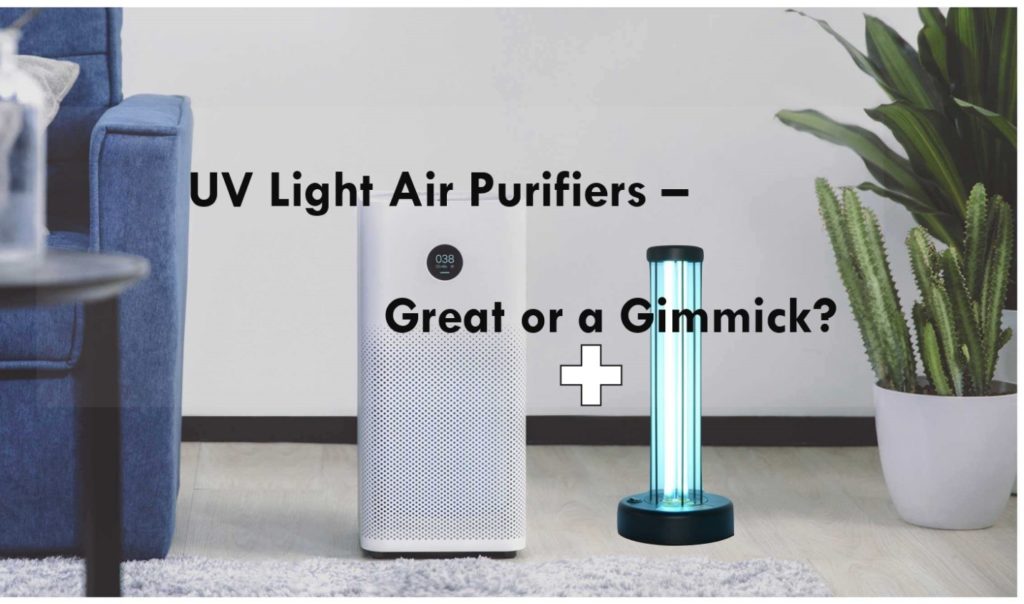
Which Is Better: UV Light Or HEPA Filter?
Both have their advantages and disadvantages, but UV-C air purifiers are more technologically advanced and provide better sanitation than standard models. Bacteria and viruses of a size less than 0.1 microns are destroyed by ultraviolet light; this includes SARS-CoV-2 variants that are small enough to be eliminated by a HEPA filter. Since the pathogens have been inactivated, there is no possibility that they will grow or spread in the area.
Additionally, in comparison to standard HEPA air purifiers, which need a constant volume of airflow in order to function, this model consumes less power. On the other hand, an air purifier equipped with a HEPA filter can capture a significant quantity of contaminants during a single cycle of operation. Even though the growth of microorganisms that have been caught by the filter and then released into the air is a risk, this risk can be lessened with regular filter replacements and good maintenance.
How To Choose the Best Air Purifier With UV Light?
Some models place an emphasis on the efficacy of irradiation as a germicidal agent, while others provide an economical price point. Regardless of which path you choose, you should always choose a model that meets the CARB’s criteria. In the packing of the air cleaner, you will discover a label stating that it has been ARB Certified. Be sure to pay attention to the amount of UV light emitted, the airflow delivery rate, the type of lightbulb used, and the dimensions of the air purifier.
It is important to note that AHAM testing does not cover UV light. Some manufacturers will lie about the performance output of their products or overestimate their capabilities in order to increase sales. We’ve put together a list of our top picks for UV air purifiers with multi-stage filtration to help you avoid all of the ineffective and questionable ones with uncoated UV lamps.
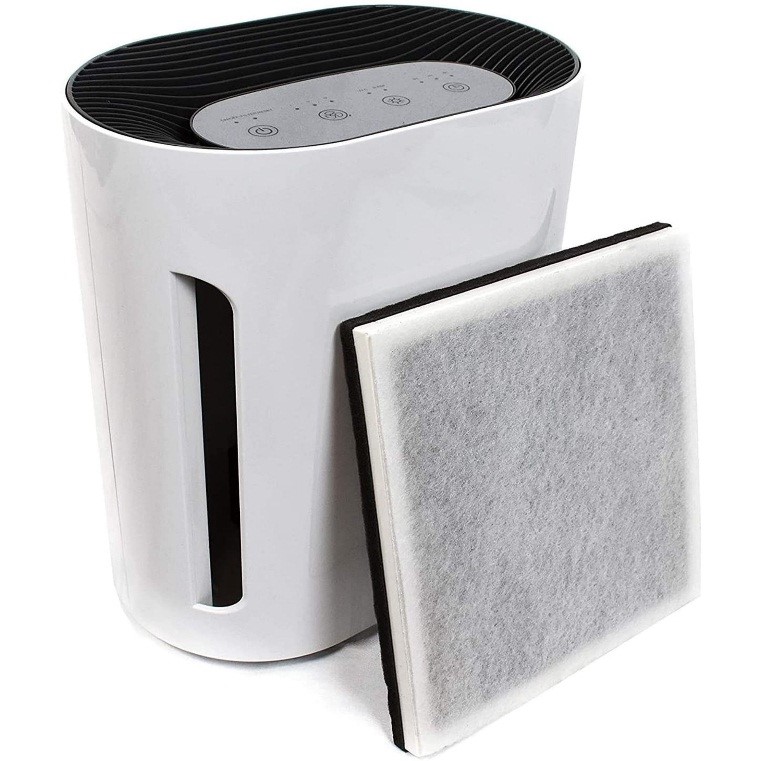
- Pure Zone 3-in-1 True HEPA Air Purifier
- Germ Guardian AC5250PT Air Purifier
- Pure Enrichment Pure Zone Elite Air Purifier
- Germ Guardian GG1100W/ GG1100B Air Purifier
- Homeric’s AP-T30 Total Clean 5 in 1 Air Purifier
- InvisiClean Aura II 4 in 1 Air Purifier
- Silver Onyx True HEPA Air Purifier
You can read the entire product reviews, as well as comparisons of spec sheets, prices, and UV light power of each of our best UV air purifiers in action against airborne pollutants, by clicking here.
Final Thoughts
We hope that by the time you reach the conclusion of this piece, you will have absolutely no doubt about the efficacy of UV air purifiers against infectious agents. If you want to have the best of both worlds, we suggest investing in a HEPA air purifier with a UV light that employs several filtrations to eliminate airborne viruses and clean the air. This will give you the best of both worlds. It is more effective than other methods at eliminating airborne germs and diseases.
It will cover a wide variety of airborne pollutants, making it significantly more effective than a conventional UV sanitizer that works on its own. Because the other filter media will also help clean the air, the chance that harmful ozone byproducts will form is lower.
In any event, if you want to maintain a high level of healthy indoor air quality over a long period of time, your primary attention should be on controlling the source of the pollution in the air inside. By opening the windows and doors, you may improve the ventilation in your home.
Position the UV air purifier so that it is in close proximity to your breathing zone, which is the area of your home where you spend the most time (for example, your bedroom). Last but not least, decrease your reliance on gas cooking appliances and either seal or replace any asbestos that may be present in the home.
